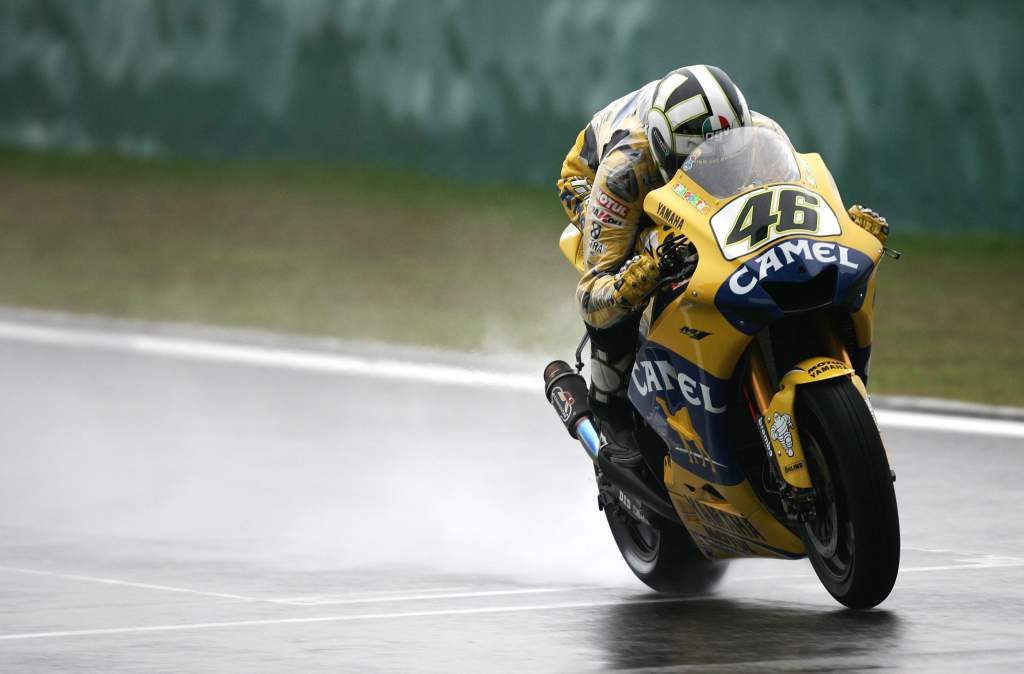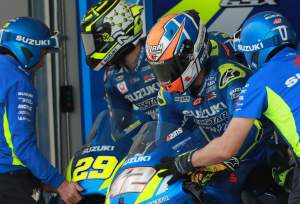At the end of the day, when it comes to every rider’s MotoGP footprint, they either were champion or weren’t – and everything else is secondary.
But valiant defeat can be every bit as worthwhile as victory, and the stories of those who fought to get close to the summit only to be just denied entry are a huge part of the mythology of grand prix racing’s premier class – whether it be over single-digit or double-digit race schedules, in 500cc or MotoGP, with wild push starts or traditional getaways from a grid slot.
Yamaha’s Fabio Quartararo wrote an unenviable entry in the history books by allowing Pecco Bagnaia to overturn a 91-point gap and deny him the title this year, but is also widely acknowledged as having had a great season, receiving less criticism for losing the crown than commendation for dragging his Yamaha M1 into contention to begin with.
His campaign was still great, but the list of great losing premier-class seasons is a rich one indeed – to the point where a list that started out as a top 10 ended up transforming into a top 15, with the extra stipulation of just one entry per rider for variety’s sake.
And there were still some contentious cuts to be made – with no place for the likes of Nello Pagani and Geoff Duke from the first two 500cc seasons, or Eddie Lawson’s eight-point defeat in 1985, or Sete Gibernau’s acrimonious 2004 duel with Valentino Rossi, or the 2008 Casey Stoner title defense that’s much better than the points tally mad it look.
In the end, these are the 15 (well, kind of) campaigns we’ve settled on.
15. Andrea Dovizioso, 2017
Ducati
37 points behind champion Marc Marquez
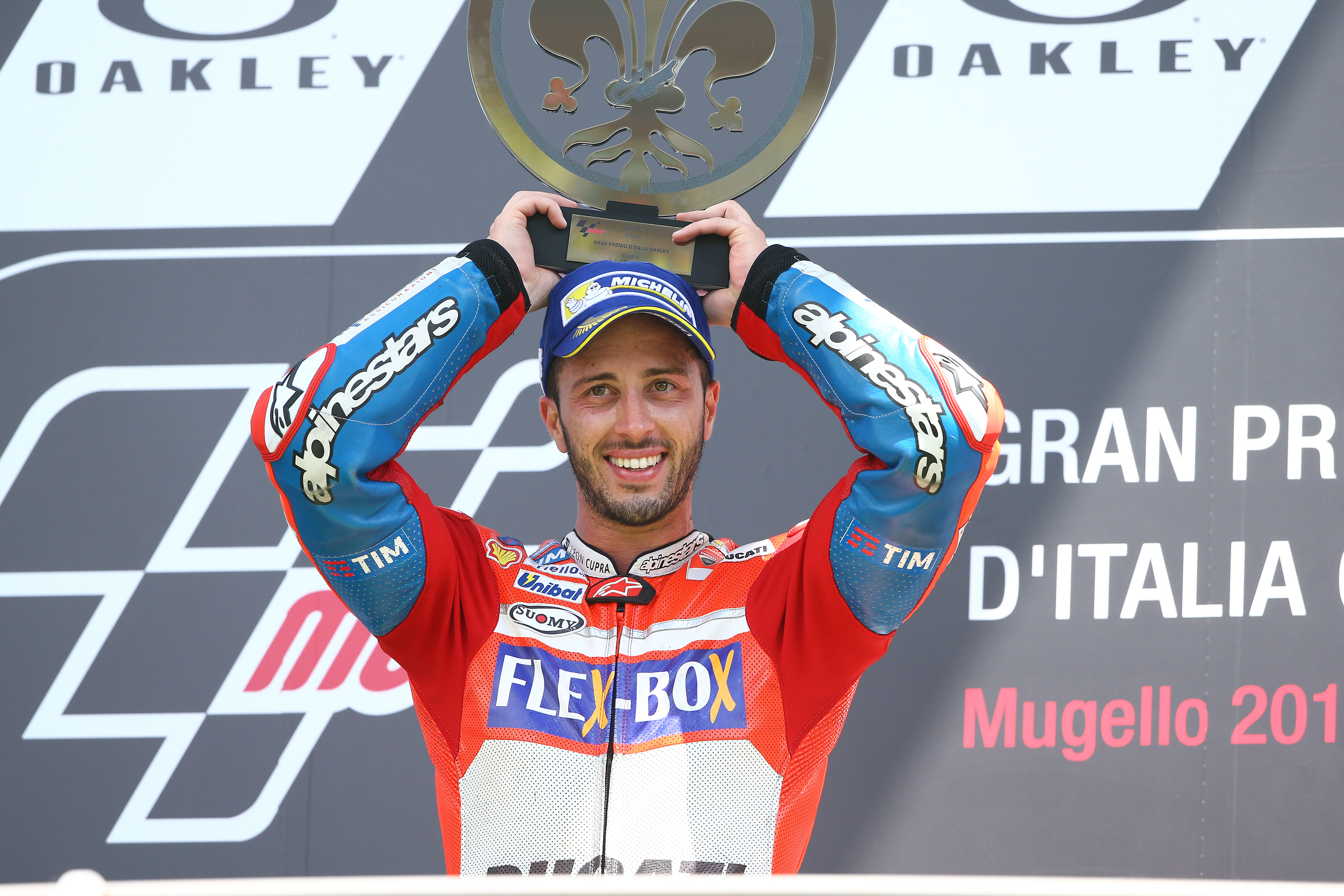
The final entry was bound to go to one of two recent Ducati runners-up. The question was, would it be the season that concluded a former Honda outcast’s redemption arc, in which he’d dragged a programme he spearheaded to the cusp of the title with a still-imperfect bike while roundly outperforming a legendary team-mate?
Or was the better pick a full-on homegrown talent whose equipment was much more competitive but who took a much bigger step in mounting a title challenge, ultimately leading three times as many laps and making himself the no-brainer gravitational centre of a successful championship bid the following year?
Ultimately, Andrea Dovizioso just gets in over Pecco Bagnaia. He did take Marc Marquez to the final race in 2017, while in 2021 Bagnaia handed Quartararo the title by crashing out in the antepenultimate round.
Bagnaia arguably had the better season. His first two campaigns in MotoGP had yielded a fairly rancid 3.4 points per race – between 12th and 13th place – and yet there he was all of a sudden, scoring podiums and wins after having immediately destroyed team-mate Jack Miller’s claim to being Dovizioso’s successor as Ducati team leader.
But Dovizioso’s six-win effort against someone who is now a living MotoGP legend, with the added flavour of their spectacular Red Bull Ring duel, just makes for a better ‘losing season’ story.
14. Daryl Beattie, 1995
Suzuki
33 points behind champion Mick Doohan
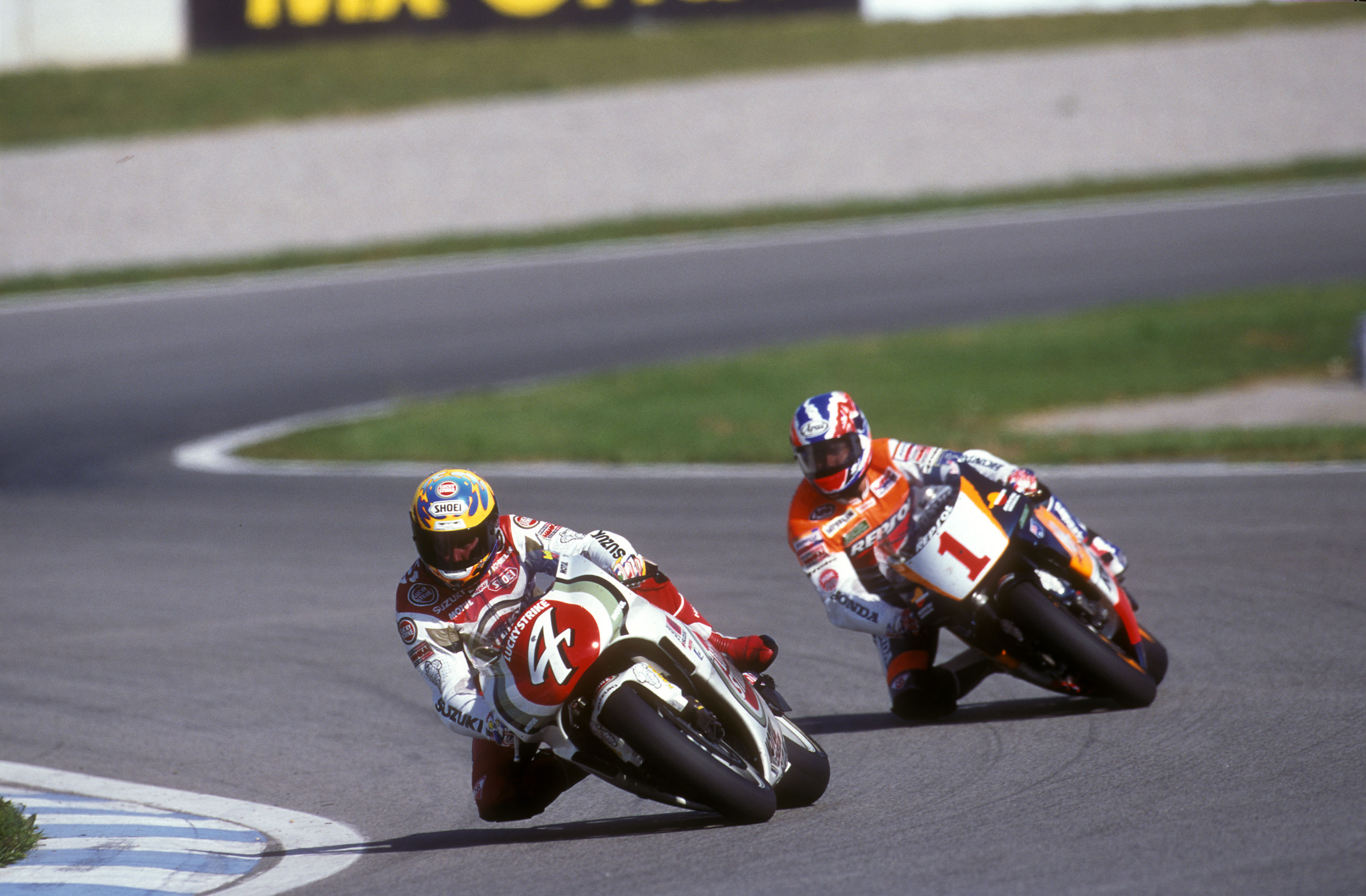
Here’s the rundown of all of Mick Doohan’s championship-winning margins: 143 points, 33 points, 64 points, 143 points again, 52 points.
Daryl Beattie’s 33-point defeat is the outlier there, the fellow Aussie giving Doohan the biggest challenge of his dominant five-year stretch. Though the latter was still clearly the benchmark rider, a mistake in the wet at Suzuka and crashes out of the lead at Jerez and the Nurburgring allowed Beattie to establish a rather formidable 29-point lead early in the season.
Hanging on would’ve been a tall order in any circumstance, but Beattie soon broke his collarbone at Assen and Doohan spent the rest of the season running up the score.
Beattie never got another real crack at him. His 1996 was an injury-ravaged nightmare and his career only lasted one more season after that.
13. Franco Morbidelli, 2020
Petronas Yamaha
13 points behind champion Joan Mir
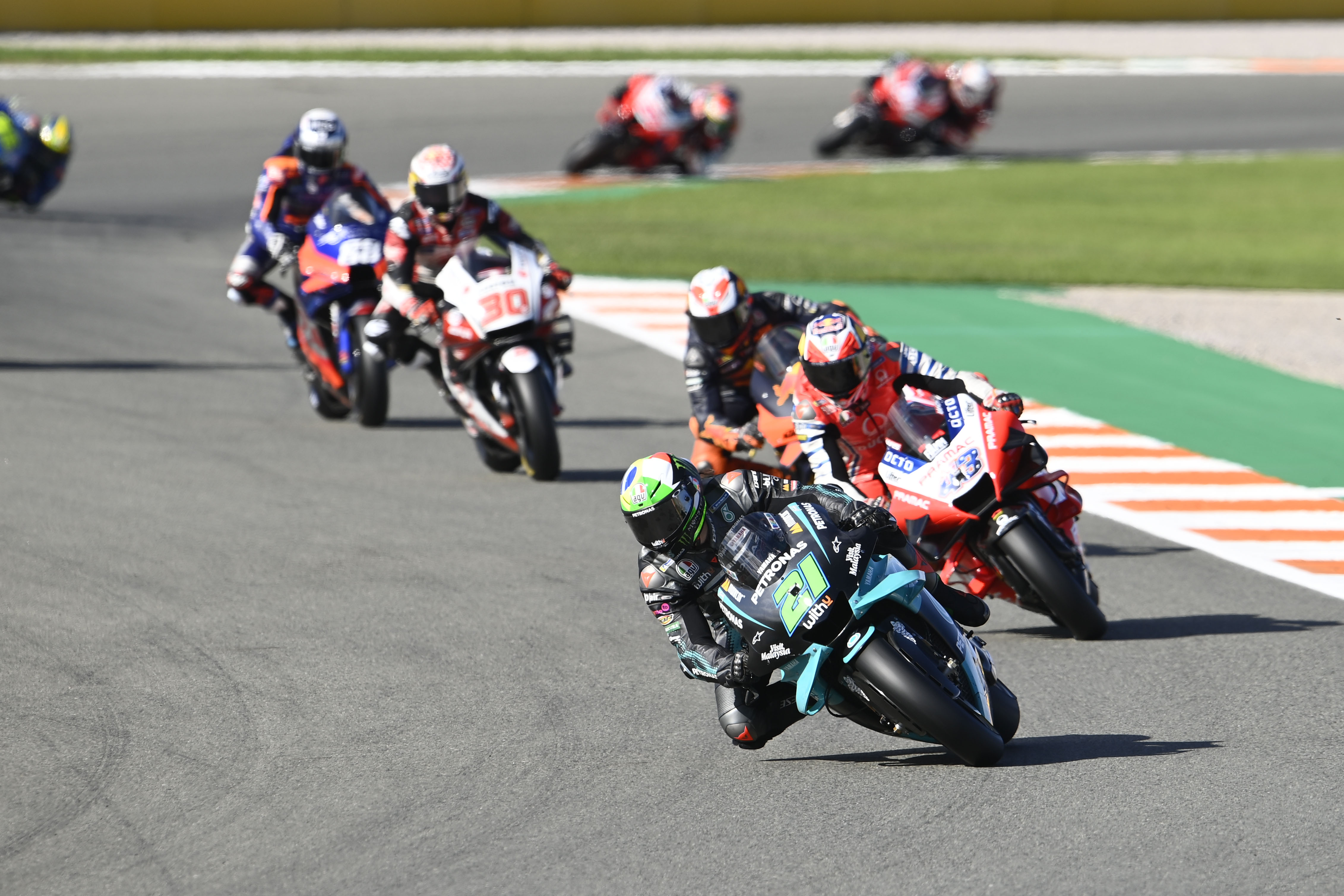
The 2020 season was a properly weird one. Nobody was consistently great, every pre-season favourite tripped over themselves in one way or another, and the eventual champion, Joan Mir, averaged fewer than a lap led per race.
There are likely a good seven riders who can see it as the title that should’ve been theirs. On Franco Morbidelli’s behalf, his former Petronas Yamaha boss Johan Stigefelt – a recent guest of The Race MotoGP Podcast – certainly does, and indeed Morbidelli has probably the strongest case.
Morbidelli led more laps than anyone and gave up more than enough points to cover his gap to Mir through more or less no fault of his own – he had an engine expire while on for a potential podium position at Jerez and was caught up in an incident with Johann Zarco at Red Bull Ring that triggered the infamous ‘thread the needle’ moment at the Turn 3 apex. He was also hindered by Yamaha’s season-long reliability concerns.
Should he therefore actually be higher on the list? Maybe, but hindsight also suggests Morbidelli was particularly lucky to remain on the excellent Yamaha 2019 bike while every other rider in the roster got ‘upgraded’ to a 2020. If Fabio Quartararo remained on a 2019 machine, too, evidence from before and after the 2020 season suggests it won’t have been Mir who Morbidelli would’ve needed to beat.
12. Randy Mamola and Freddie Spencer, 1984
Honda
31 points and 55 points behind champion Eddie Lawson
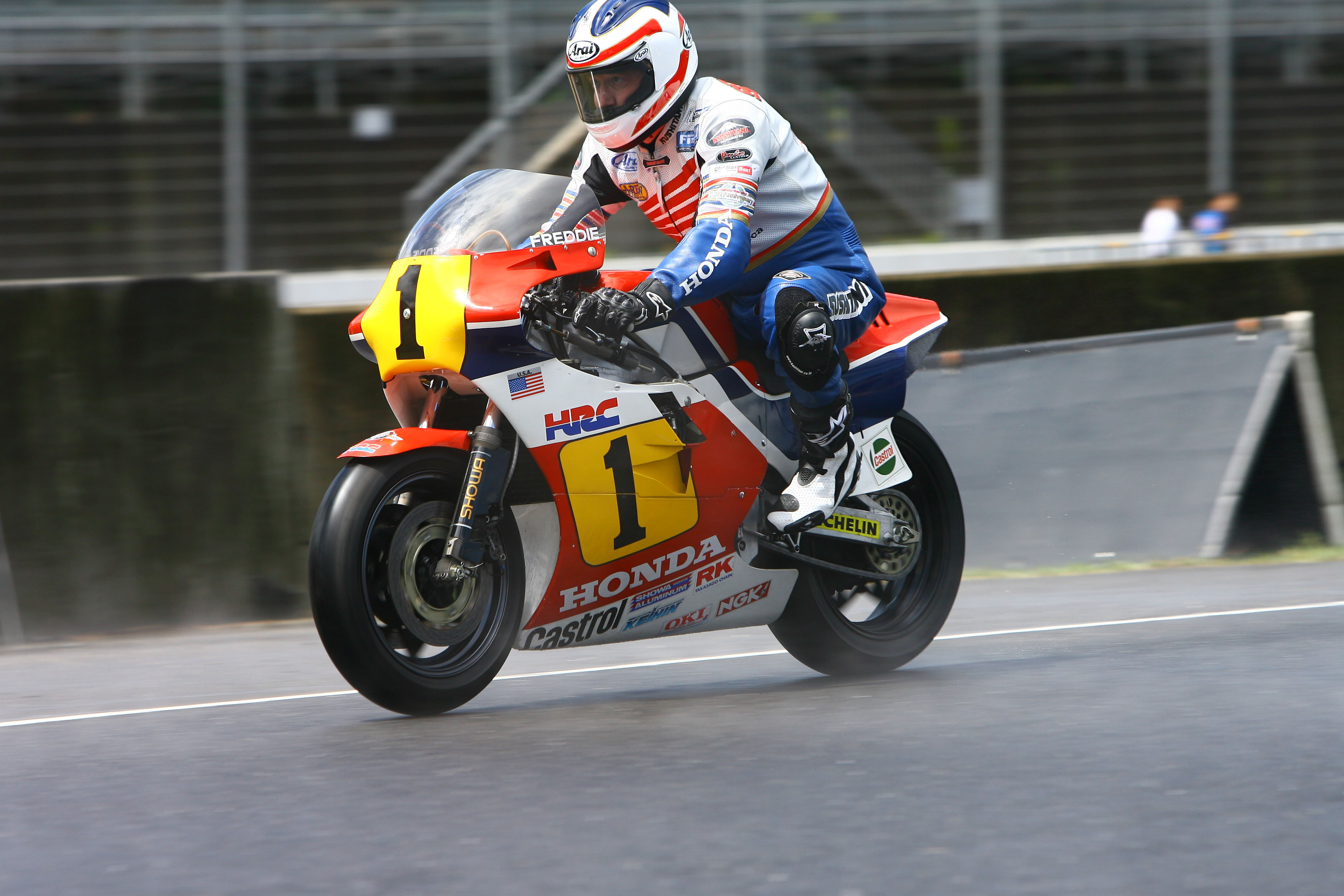
Is it cheating to include two riders as one entry? Yes, almost certainly. But 1984 was just such a weird season – Yamaha’s Eddie Lawson was ultimately a very comfortable champion, yet both Randy Mamola and Freddie Spencer could’ve felt it was winnable for them.
Defending champion Spencer (pictured above) started the season by missing the opener through a practice crash injury, then was sidelined again via a Transatlantic Trophy crash. Amid his injury troubles, Mamola, previously a Suzuki rider, came into the Honda fold starting from the third race of the campaign.
Mamola, getting in his possession a tried-and-true three-cylinder Honda, was picking up good points on the regular. For Spencer, initially campaigning the new Honda V4 but eventually demanding a return to the three-cylinder bike, it was a win-or-bust season.
The latter ultimately won five times in seven starts but was done for the season after suffering another injury.
Mamola – who had earlier in the season waved Spencer past to a second place in Austria – took over the V4 and won that race, adding a second victory to a campaign that already featured a superb final-chicane move to defeat Raymond Roche for Dutch TT honours.
Yet amid all that it was Lawson racking up the points, and Mamola’s win in the Mugello finale only took him to 31 points off the lead. Would he have made up those 31 in the missed first two rounds? Would Spencer have triumphed if healthy?
The following year provides something of an answer to the second of those questions – as a recovered Spencer took the V4 Honda to seven wins in 11 starts.
11. Kevin Schwantz, 1989
Suzuki
65.5 points behind champion Eddie Lawson

Kevin Schwantz is not just the only rider on this list besides Spencer to not have finished second in the chosen season – he didn’t even finish third. When all the points were counted up, Schwantz’s points tally was a wholly unremarkable 71% of champion Eddie Lawson’s.
But put on the highlights from almost any race of that season, and Schwantz is always right there, the sole Suzuki rider scoring podiums and battling for wins, dragging his RGV500 to the lead with moves like the audacious chicane pass on Wayne Rainey at Suzuka.
In the races Schwantz finished, he was first or second. He didn’t finish nearly enough of them, and sometimes that was his fault. He highsided out of second place in Australia, fell on course for a win at Jerez in a crash he rightly feared may have “thrown the championship away”, and went down at Spa amid horrible visibility during an ultimately null-and-void third leg of a rain-disrupted race.
But the reliability was absolutely galling, too. There were failures out of podium positions in Germany and Sweden, and the nightmare scenario of the bike giving out with a lap to go while leading at Assen. And that wasn’t even the most outlandish way to lose a good chance at victory – in that infamous race at Misano where the top riders boycotted a wet restart due to feeling the track wasn’t suitable for the conditions (a decision that led to a ‘strike-breaker’ victory of sorts for Pierfrancesco Chili) it was Schwantz who had been leading when the rain came.
Champion Lawson did probably spend much of the run-in in pure title-management mode, but a slightly luckier Schwantz would’ve given him serious trouble. But luck returned the favour – albeit in a deeply and cruel way – four years later.
10. Phil Read, 1975
MV Agusta
8 points behind champion Giacomo Agostini
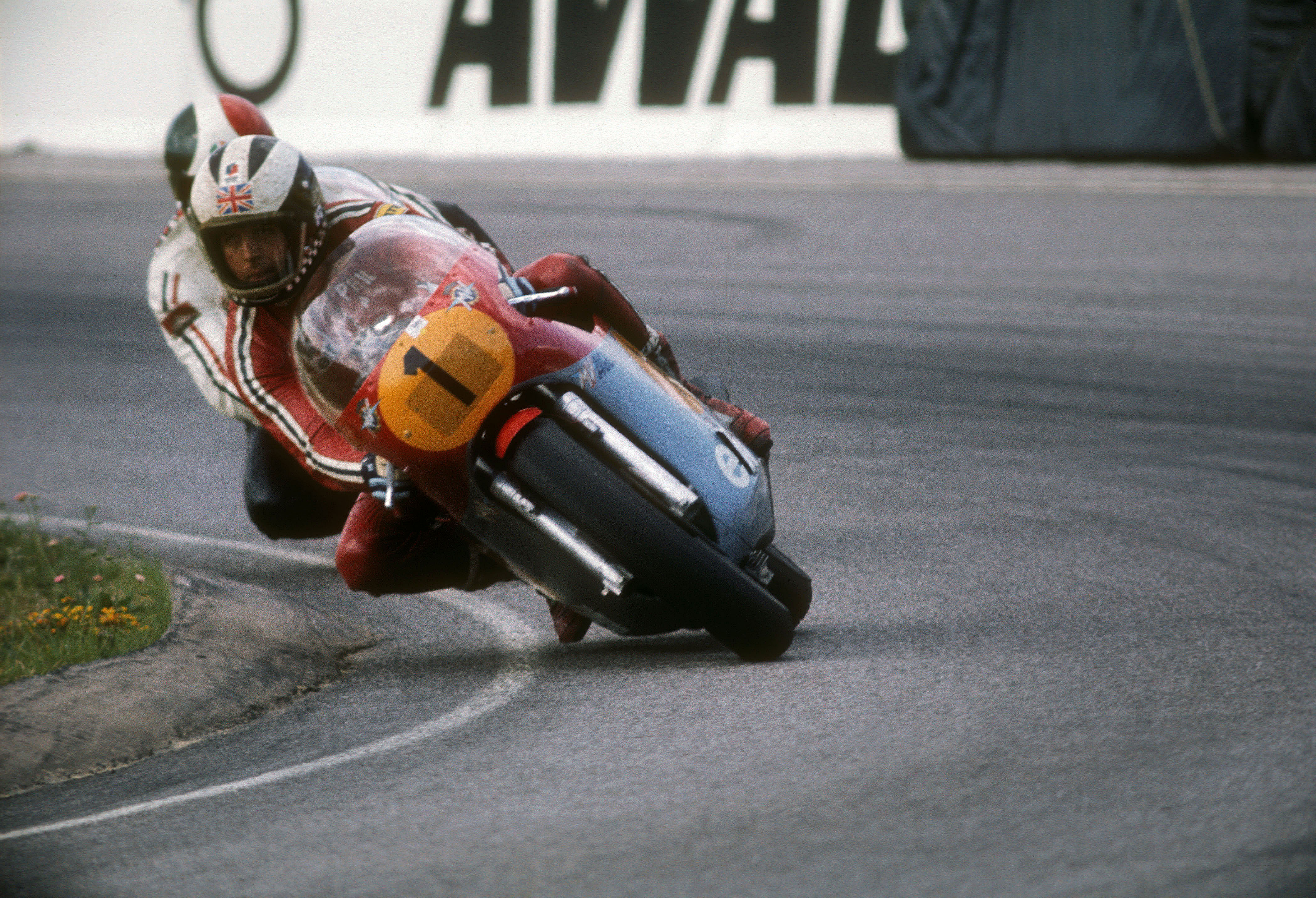
In a vacuum, could you tell the story of motorcycle racing without mentioning a two-time premier-class champion and 11-time premier-class race winner? Probably. There sure have been a lot of seasons.
But sporting history isn’t a vacuum, and Phil Read – who passed away earlier this year aged 83 – isn’t a name that can be omitted. Part of that is because of his success in other classes beyond 500cc, another part is his central role in the process that led to the Isle of Man TT losing its world championship race status.
Mostly, though, he should go down as the rider who ended the reign of terror of a champion whose sheer numbers in grand prix racing remain unmatched. In 1973, Read rocked up to Giacomo Agostini’s proverbial house, MV Agusta, and beat him. He beat him again the following year, Agostini having by then defected to Yamaha.
The two-stroke Yamaha was finally a credible foil to Read’s four-stroke MV Agusta in 1975, but Read still outscored Agostini. Kind of. The pair contested the same nine races, both sitting out the Isle of Man TT, and Read put up 12 points more despite an early-season finger injury and an Imatra mechanical failure – but dropped scores elevated Agostini past him.
It was probably fair enough, as Agostini won more races and had hard luck of his own – but still, what a way for their final grand prix title duel to play out.
9. Kenny Roberts Jr
Suzuki
47 points behind champion Alex Criville

Kenny Roberts Jr had three top-five finishes, none of them podiums, across 42 500cc starts when he rocked up at Suzuki – a manufacturer in the middle of a podium drought of over two years. Naturally, then, they immediately combined for a really dominant win in the Sepang opener, before Roberts soaked up the pressure from perennial series champion Mick Doohan in the wet at Motegi to go back-to-back.
When Doohan then crashed during practice at Jerez, suffering injuries that would ultimately convince him to retire, a clear path to the title opened up for Roberts. That path was then immediately bulldozed.
That same Jerez weekend, Roberts got run off the road by the only other Suzuki present, that of Nobuatsu Aoki. He then launched himself into the air two weeks later at Paul Ricard while trying to save a crash in leader Alex Criville’s wheeltracks.
Criville, Honda’s ‘next man up’ after Doohan, had hit relentless form. He only slipped up at Assen over the next stretch, and whatever gains Roberts made by finishing second between two other Hondas there were immediately undone by a bad Donington showing.
By the time Roberts finally won again, holding off Criville at the Sachsenring, the latter had a 47-point lead to lean on. It was unassailable, with any glimpses of a comeback snuffed out conclusively when Roberts had his rear tyre fall apart while leading by nearly six seconds with five laps to go at Phillip Island.
But the point had been made – and, a year later, the potential was delivered on in full.
8. Dani Pedrosa, 2012
Honda
18 points behind champion Jorge Lorenzo
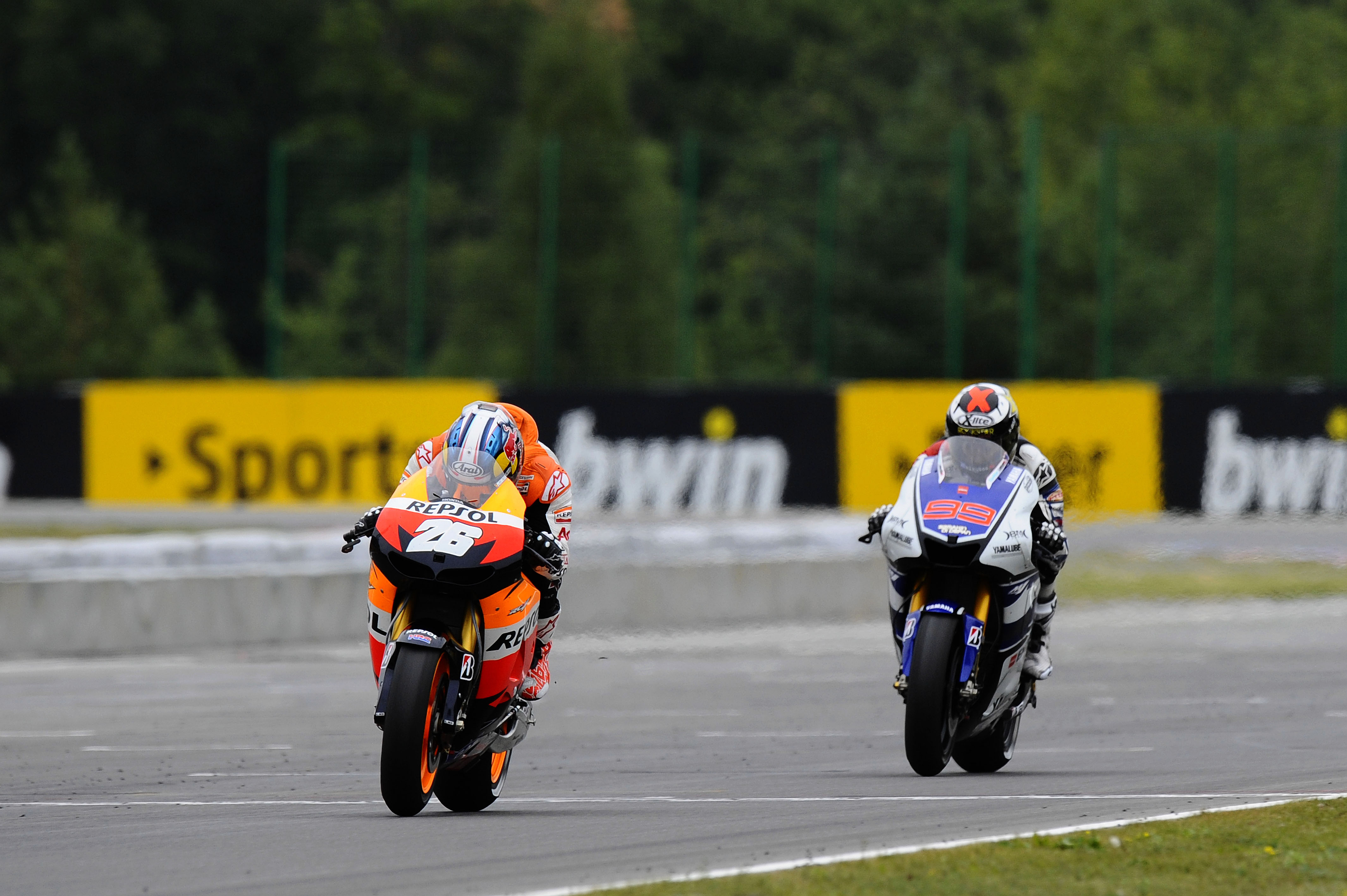
You could make a decent argument for 2013 actually being the one that got away from the 31-win Pedrosa, but the prior year had been the better season – more wins, more podiums, more poles and (at the time) a more complete team-mate.
Indeed, Casey Stoner was largely stronger than Pedrosa early on, representing Honda’s best chance against a top-form Jorge Lorenzo. But defending champion Stoner’s campaign, which it quickly became known would be his swansong, started to properly unravel with a crash in Pedrosa’s wheeltracks at the Sachsenring before being conclusively ruined by an ankle injury at Indianapolis.
In the meantime, Pedrosa picked up the slack. Starting from that very Indianapolis weekend, he won five of six, including a class last-lap duel with Lorenzo at Brno. The only blip in that period was a very costly exit at Misano, as he was wiped out by Hector Barbera – although, in the interest of fairness, Lorenzo had been a luckless bystander in an Alvaro Bautista crash earlier in the season.
In the end, it wasn’t quite enough. With Stoner back but not exactly forced into a support role, Pedrosa – facing a 23-point deficit – crashed from the lead at Phillip Island, giving Lorenzo the title with a round to spare.
That 23-point gap looked irreversible at the time anyway, although given the subsequent Valencia finale was a flag-to-flag race in which Lorenzo highsided, it’s not impossible to see how Pedrosa could’ve come away with the crown.
7. Wayne Rainey, 1993
Yamaha
34 points behind champion Kevin Schwantz

Having banked a come-from-behind third-straight title in 1992 due to a rival’s horrific injury – more on that further into the article – Rainey embarked on an almost season-long ding-dong duel with Schwantz the following year, and looked set to win it despite Schwantz’s qualifying excellence.
A win by 0.086 seconds in a Suzuka photo finish was among the standout results allowing Rainey to keep the pressure on Schwantz, and when the latter ended up collateral damage in a Silverstone shunt between Doohan and Alex Barros, Rainey – who would end the season with 127 laps led, with nobody else cracking triple digits – suddenly had one hand on the title.
Then, in a moment, it was all over – the title battle, the chase for a ‘four-peat’ and, unfortunately, Rainey’s career. The rear of the #1 Yamaha stepped out as he led the Misano race on lap 10, the resulting crash leaving Rainey paralysed from the waist down.
Now the president of MotoAmerica, Rainey was back on a bike 26 years on from the crash, and got to ride his 500cc Yamaha again earlier this year at Goodwood – joined by Doohan, Schwantz and Roberts.
6. Kenny Roberts, 1983
Yamaha
2 points behind champion Freddie Spencer

Kenny Roberts’ 500cc career was nothing if not efficient. His 59 starts – less than half of what, say, Karel Abraham would manage several decades later – were good for three riders’ titles. The statistical profile is remarkably similar to someone like Casey Stoner’s: a win every 2.7 starts (3.0 for Stoner), a podium every 1.5 starts (1.7 for Stoner) and a retirement that came while he, like Stoner, was still clearly capable of mixing at the front.
‘King Kenny’ achieved all he did despite having two seasons effectively written off by a flawed new square four-engined Yamaha and various tyre complications, but what proved to be his final season very nearly yielded another title.
The Yamaha was an improved proposition in 1983, great on the straights yet unable to live with the three-cylinder Honda in the corners, and Spencer established an early lead for the latter – aided by a loss of power for Roberts at Le Mans and a crash followed by Roberts running out of fuel in the final corner at Monza.
Spencer’s own power loss in Germany was mitigated by the race being called early for rain, but that race started a run of six Roberts wins in nine races. But it wasn’t quite enough; at the penultimate round at Anderstorp, Spencer ran a furious Roberts off the track in a last-lap duel, and securing the win meant he could afford to finish second to Roberts in the Imola finale, to claim the title by two points.
Despite the disappointment, and the fact he’d remained clearly good enough to keep winning, Roberts walked away as he had planned. “I no longer thought about it for breakfast, lunch and dinner. I didn’t sleep with racing [on my mind] like I had done.”
5. Mike Hailwood, 1967
Honda
Tied with champion Giacomo Agostini
The 1967 motorcycle grand prix season is best known for a famous Isle of Man TT duel between Mike Hailwood and the all-conquering Giacomo Agostini.
That duel, in the Senior TT that counted towards the world championship standings, went Hailwood’s way as Agostini’s MV Agusta broke down.
The 500cc title race, however, turned out in Agostini’s favour, the Italian prevailing on countback in a dropped-scores tie after he followed ‘Mike the Bike’ home in the Canada decider. Ultimately, for both the best six results were as follows – five wins, one second place – so if you were a ‘dropped results’ maximalist you could potentially advocate for it being a genuine tie.
No matter, though, as Hailwood and Honda got plenty of silverware from that season anyway, with the 350cc and 250cc titles going his way.
4. Jorge Lorenzo, 2013
Yamaha
4 points behind champion Marc Marquez
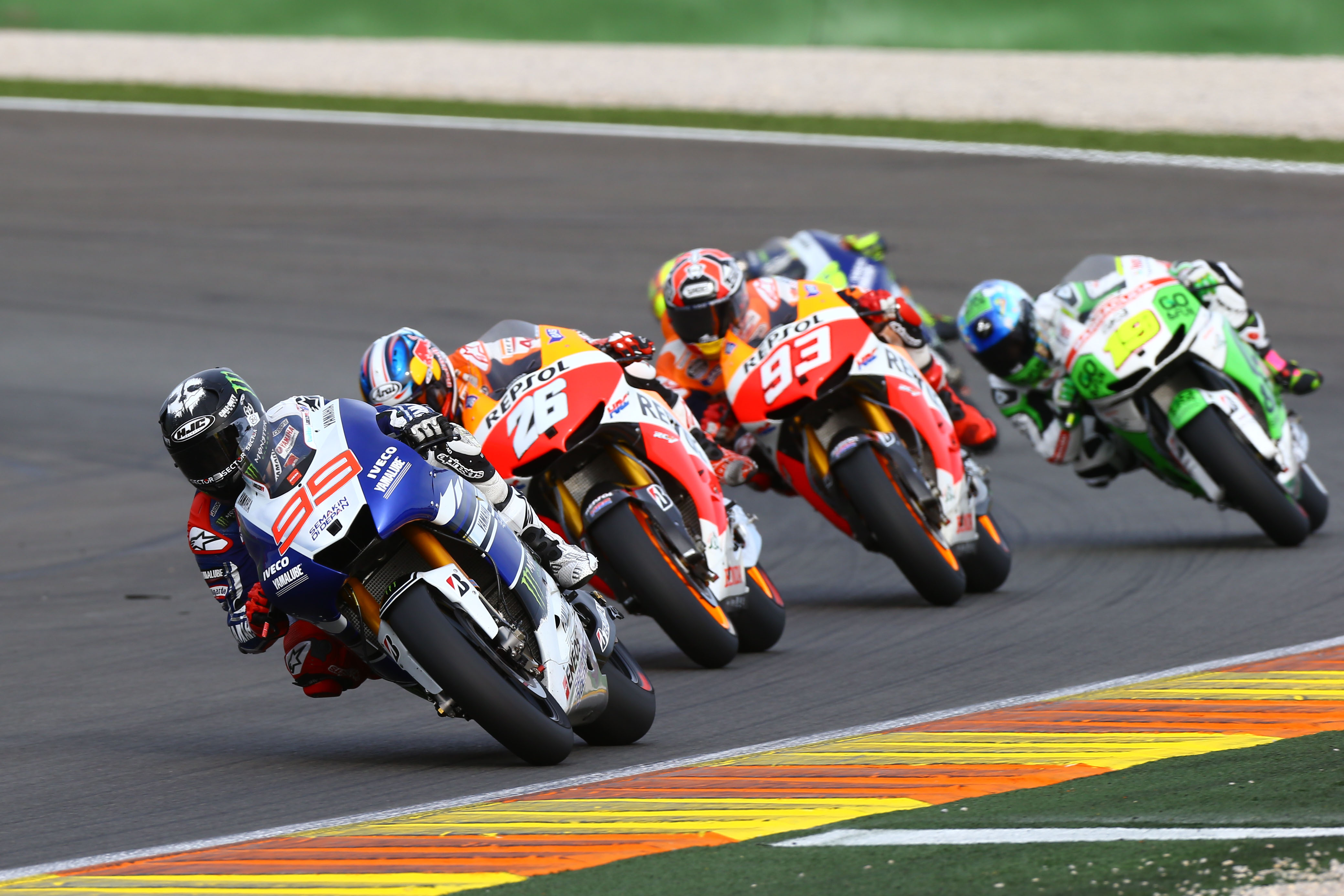
A failed title defence is one thing. A failed title defence versus somebody new to the championship is quite another. But Jorge Lorenzo’s 2013 is no black mark against the three-time champion – if you were to re-run that season 10 times, it feels a reasonable assumption that on five or more occasions the crown would’ve gone to him.
Ultimately, it was an injury-conditioned title fight. Lorenzo’s two big crashes, at Assen (which ultimately left him gritting his teeth en route to a fifth-place finish with a freshly-installed titanium plate for a broken collarbone) and Sachsenring (which bent said plate, ruled him out of the weekend and conditioned the next stretch of races), clearly cost him the title. But Dani Pedrosa, who actually led the standings heading into Assen (largely due to Lorenzo disappointing in the wet at Le Mans) can also point to a ruinous injury of his own.
And Marc Marquez was nowhere near a clean bill of health, not even close, but he made hay while his two main rivals were recovering and assumed control of the title race.
The reason Lorenzo is on this list, however, is that once fit and equipped with Yamaha’s newly-developed seamless gearbox he ultimately did make Marquez sweat. The rookie’s silly black flag error in the famous ‘mandatory pitstop’ Phillip Island race certainly helped matters, but Lorenzo was playing his part otherwise. He therefore arrived to Valencia with an outside shot, and tried to cunningly back Marquez into the pack before settling for a championship defeat in style by easing to victory.
The stats are a good look for Lorenzo and the #99. He won a field-high eight races, with one of those wins a spectacular last-lap Silverstone duel against Marquez and the rest coming by a stereotypically Lorenzo-esque average winning margin of 4.37s.
He was also considerably stronger than returning team-mate Valentino Rossi and led 236 laps – 25 more than the rest of the grid combined.
3. Fabio Quartararo, 2022
Yamaha
17 points behind champion Pecco Bagnaia

The number that will always be cited is 91 – Pecco Bagnaia’s deficit after Sachsenring – but Quartararo’s actual points lead never went above 34 in 2022. Still, at a certain point – that point being the sublime ride to second place at a Yamaha-unfriendly Red Bull Ring – the Frenchman’s second successive coronation felt an inevitability.
It feels too recent to recap what happened after, but the long and short of it is Bagnaia and his fellow Ducatis, either finally fully on top of their current-spec machines or still competitive on older versions, stopped leaving Quartararo anything but breadcrumbs on Saturdays and Sundays.
He and Yamaha could’ve made it more of a fight, what without that crash with Aleix Espargaro in Assen, the tyre pressure error in Thailand and the frankly awful race at Phillip Island. Erase also the Marc Marquez-induced Aragon shunt, and you may just have a season in which Quartararo goes to Valencia with a reasonably comfortable lead over Bagnaia.
But that’s just not how a 20-race season works. Perfection was demanded of Quartararo – and all he had was mere greatness.
2. Mick Doohan, 1992
Honda
4 points behind champion Wayne Rainey
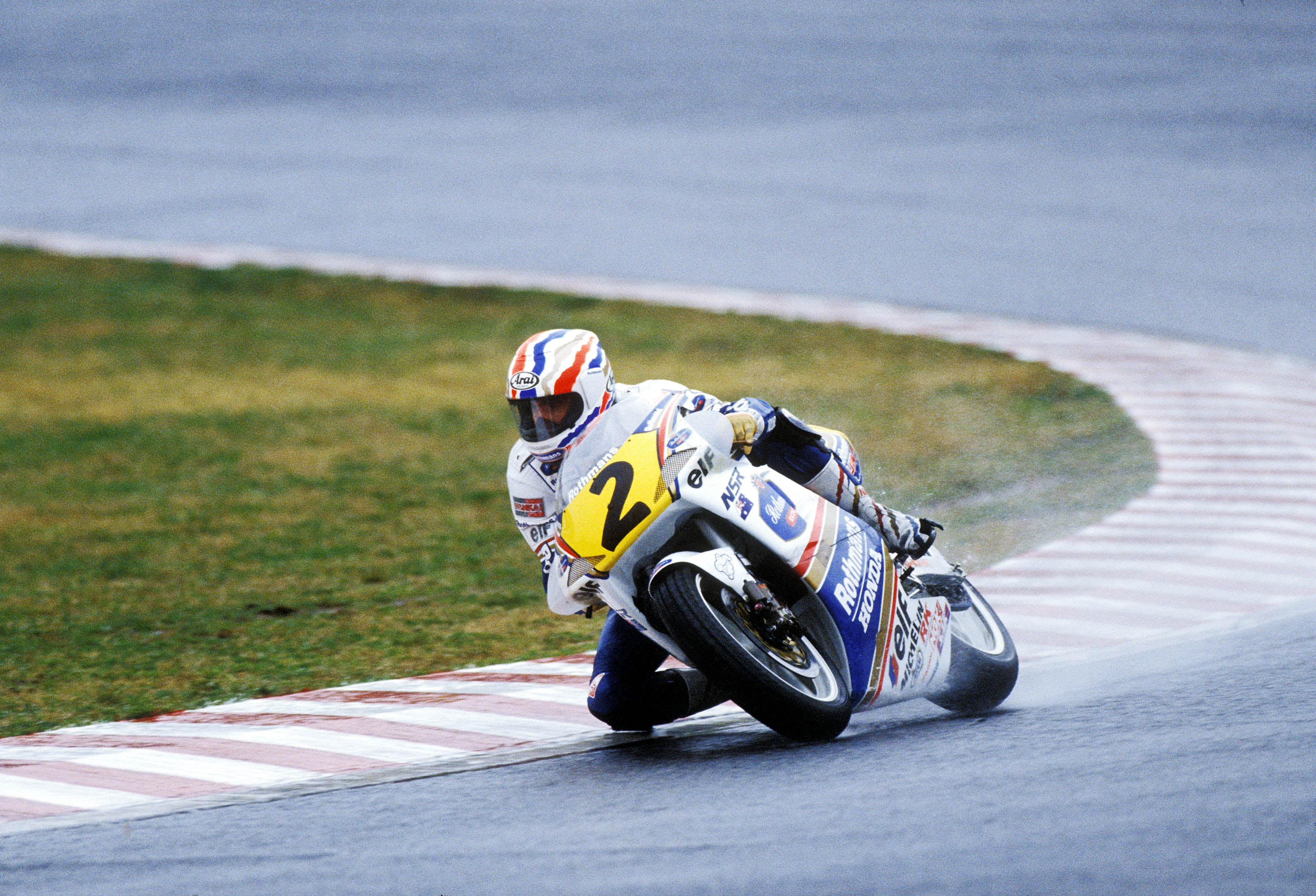
The 1992 500cc season had just ticked past the halfway mark, and Doohan, for all intents and purposes, had the title won. Having come up just short of beating Rainey to the crown the previous year, he was thriving as Honda’s new ‘Big Bang’ engine appeared to have turned the title race into a formality.
Five of the seven grands prix had gone Doohan’s way, most of them won by double-digit seconds, and he had come second in the other two. But then he mangled his right leg in a crash, thought to be caused by fluid on track, at Assen, and surgery on the same day triggered complications that nearly cost him said leg, if not more.
Remarkably, the title was still on as Doohan set about recovering. In that same Assen weekend, nearest championship rival Schwantz broke his arm after getting tagged at the rear by Lawson during a lead battle. And other main rival Rainey wasn’t even racing that Sunday, in too much pain from injuries sustained the previous round.
But soon Rainey was back on form, and putting points on the board. As Doohan returned for the penultimate round, unable to drag himself into the points (only the top 10 scored that year, as opposed to the top 15 in 1988-91 and every year since 1993) with the leg not just frail but infected, he could only watch Rainey reduce the gap to two points, before the American got the job done in the season finale.
Rough ordeal all around. But while the leg injury details are truly harrowing, don’t feel too bad about the lost title – once back to fitness, Doohan put that one right and then some.
1. Valentino Rossi, 2006
Yamaha
5 points behind champion Nicky Hayden
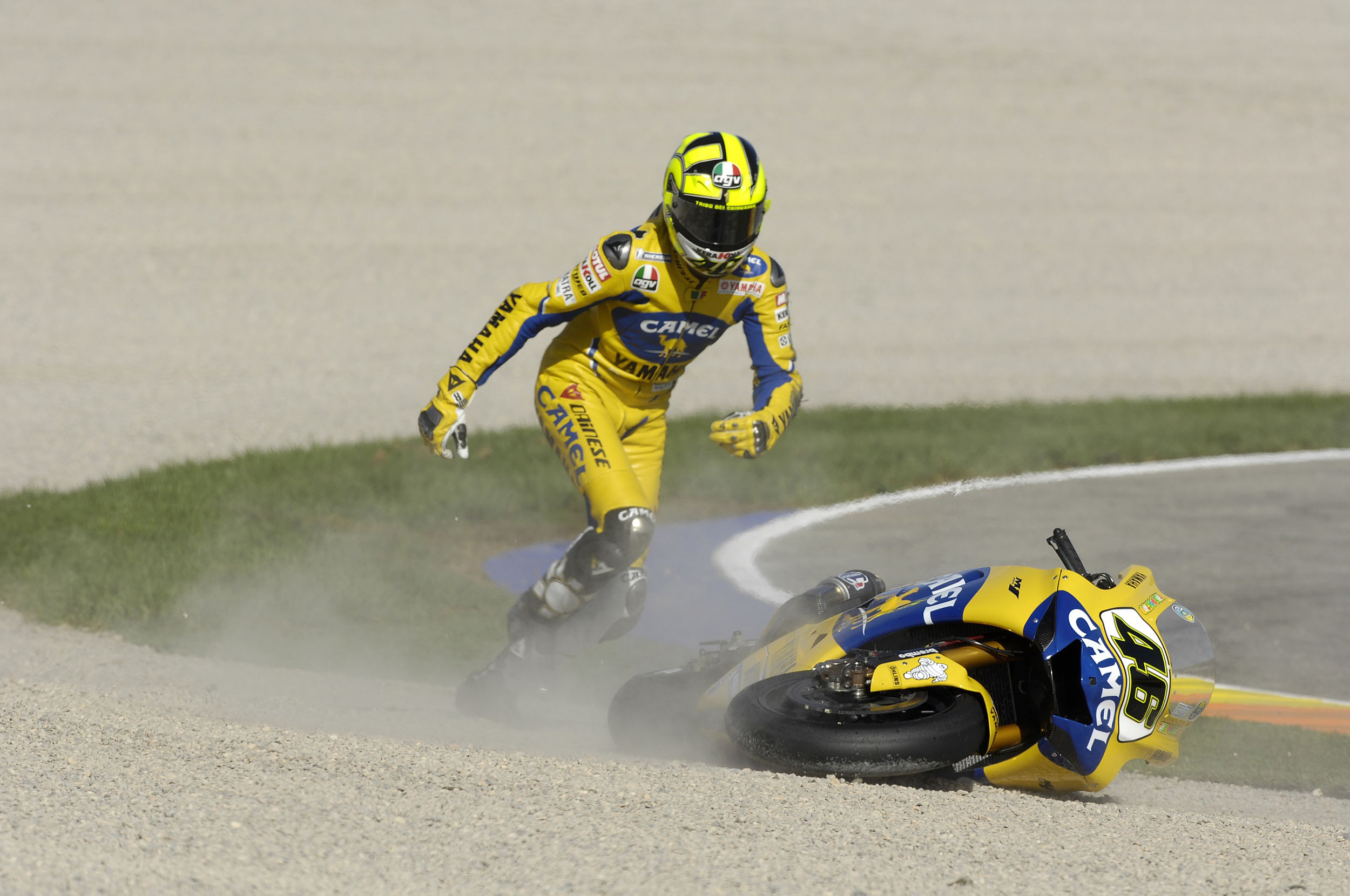
The ‘one season per rider’ rule is at play here, as Valentino Rossi had at least three seasons that deserved serious consideration.
His 2000, while crash-happy, was a stellar rookie effort that made it obvious he was a star of the future. And his 2015 was a five-point defeat in infamous, super-controversial circumstances.
But Kenny Roberts Jr was the fastest rider in 2000. And even Rossi’s most dedicated fans probably admit that in 2015 Jorge Lorenzo was quicker, just not as efficient.
Yet when it comes to 2006, Rossi was – as he was for most years that decade – very clearly the man.
That is no slight on Nicky Hayden, who rode the season of his life and whose coronation shouldn’t have even relied on Rossi’s famous crash in the Valencia finale given Hayden himself had been wiped out by team-mate Pedrosa in the prior round.
Yet it was very much a title Rossi lost. And, though it’s true in a purely factual sense, it is deeply unfair to say he fumbled it at Valencia.
Working with a bike suffering from chattering, Rossi was wiped out by Toni Elias (the very rider who would so narrowly deny him in a pivotal Estoril photo-finish) at Jerez, had a front tyre malfunction in China, had his bike give out while leading by a country mile at Le Mans and suffered a race-ending engine-cooling failure at Laguna Seca.
That’s already an appalling amount of points lost – and, while it was self-inflicted, you can also add a hand-fracturing practice crash at Assen into the ‘unfortunate’ column.
More wins than anybody, more poles than anybody, more laps led than anybody. Hayden was a deserving 2006 champion, but Rossi remained the category’s benchmark.


